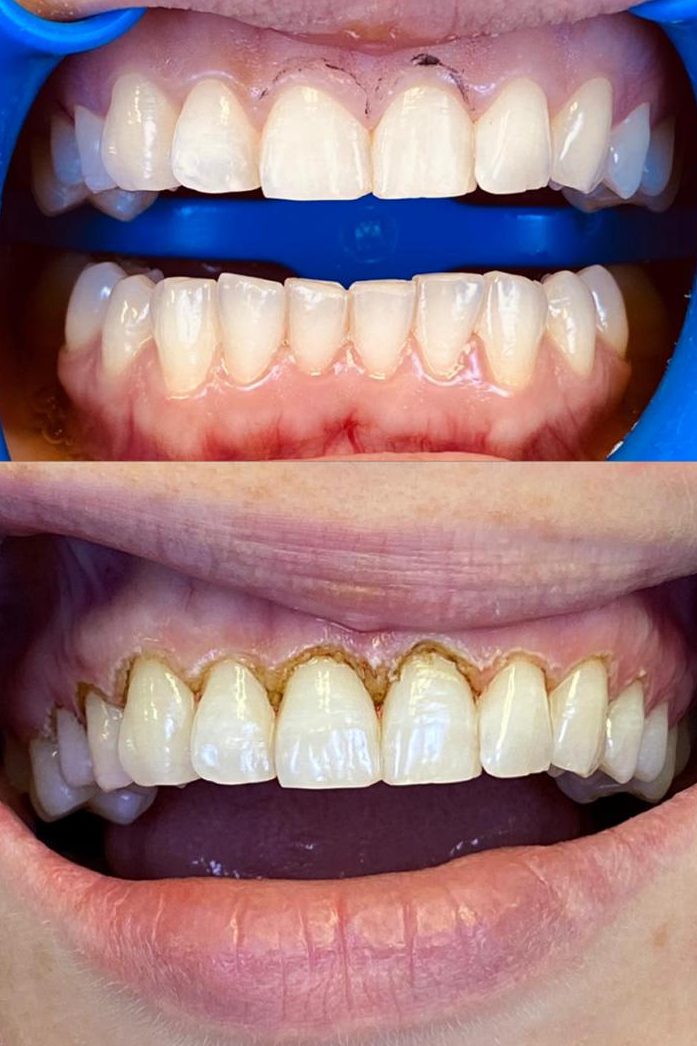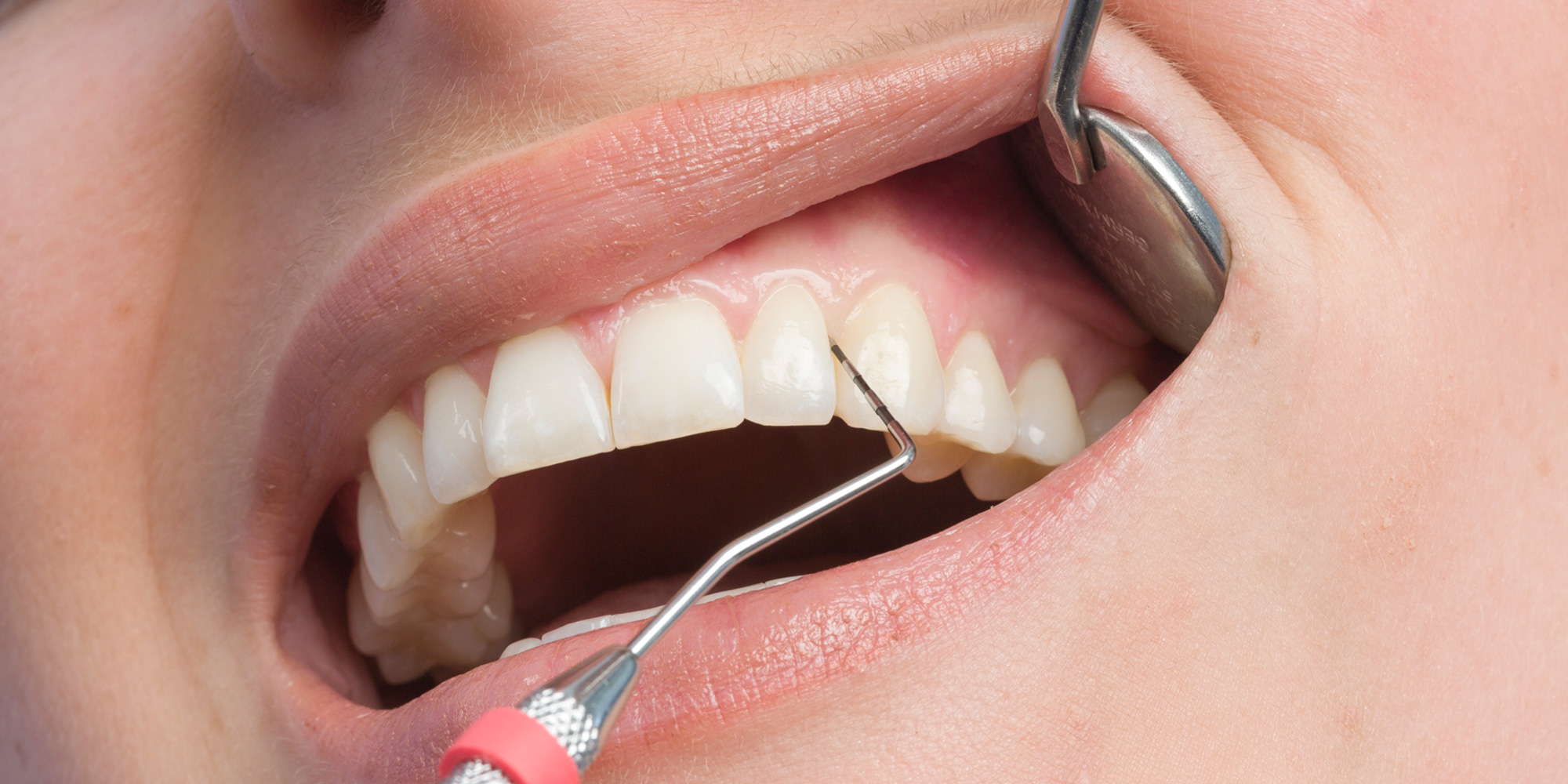periodontology
Periodontology
This is the specialty that diagnoses and treats conditions affecting the gums and the periodontal tissues. Periodontal tissues are those structures that help support the tooth – including bone. Some periodontists (the specialists in this area) will also place dental implants.
Periodontal disease is a condition that affects the supporting tissue of the mouth. There are two main stages of gum disease: gingivitis (the less severe condition, only affecting the gums) and periodontitis (where all the supporting structures are involved). Although there are numerous signs and symptoms associated with periodontal disease, you may not realise you have the disease. Your dentist will check for signs of periodontal disease during your check-up.

Gingivectomy with laser
Gingivectomy is a dental surgery in which part of the gum tissue is removed.
- The operation itself is not painful as it is performed under local anesthesia
- We introduce you to our patient.
- We performed
- Gingivectomy with LASER
- Without hemoragia
- Without pain
- Without a scalpel, in 10 minutes here is the result
- Gorgeous smile in no time
What is Periodontics?
Periodontics is a branch of dentistry that deals with the supporting structures located around the teeth which are known collectively as the periodontium. The term periodontics is derived from the Greek words “peri” meaning around and “odons” meaning tooth.
These periodontal structures include:
- The gingiva or gums
- The alveolar or jaw bone
- The cementum which connects the tooth to the jaw bone by anchoring it to the periodontal ligament
- The periodontal ligament which holds the tooth in place in the jaw bone
A periodontist is a specialist who deals with the diseases and treatment of any of these supporting structures.

What is the goal of periodontitis treatment?
Nonsurgical treatments
If periodontitis isn’t advanced, treatment may involve less invasive procedures, including:
- Scaling. Scaling removes tartar and bacteria from your tooth surfaces and beneath your gums. It may be performed using instruments, a laser or an ultrasonic device.
- Root planing. Root planing smooths the root surfaces, discouraging further buildup of tartar and bacteria, and removes bacterial byproducts that contribute to inflammation and delay healing or reattachment of the gum to the tooth surfaces.
- Antibiotics. Topical or oral antibiotics can help control bacterial infection. Topical antibiotics can include antibiotic mouth rinses or insertion of gels containing antibiotics in the space between your teeth and gums or into pockets after deep cleaning. However, oral antibiotics may be necessary to completely eliminate infection-causing bacteria.
Surgical treatments
If you have advanced periodontitis, treatment may require dental surgery, such as:
- Flap surgery (pocket reduction surgery). Your periodontist makes tiny incisions in your gum so that a section of gum tissue can be lifted back, exposing the roots for more effective scaling and root planing.
- Soft tissue grafts. When you lose gum tissue, your gumline recedes. You may need to have some of the damaged soft tissue reinforced. This is usually done by removing a small amount of tissue from the roof of your mouth (palate) or using tissue from another donor source and attaching it to the affected site.
- Bone grafting. This procedure is performed when periodontitis has destroyed the bone surrounding your tooth root. The graft may be composed of small fragments of your own bone, or the bone may be synthetic or donated.
- Guided tissue regeneration. This allows the regrowth of bone that was destroyed by bacteria. In one approach, your dentist places a special piece of biocompatible fabric between existing bone and your tooth.
- Tissue-stimulating proteins. Another technique involves applying a special gel to a diseased tooth root. This gel contains the same proteins found in developing tooth enamel and stimulates the growth of healthy bone and tissue.

